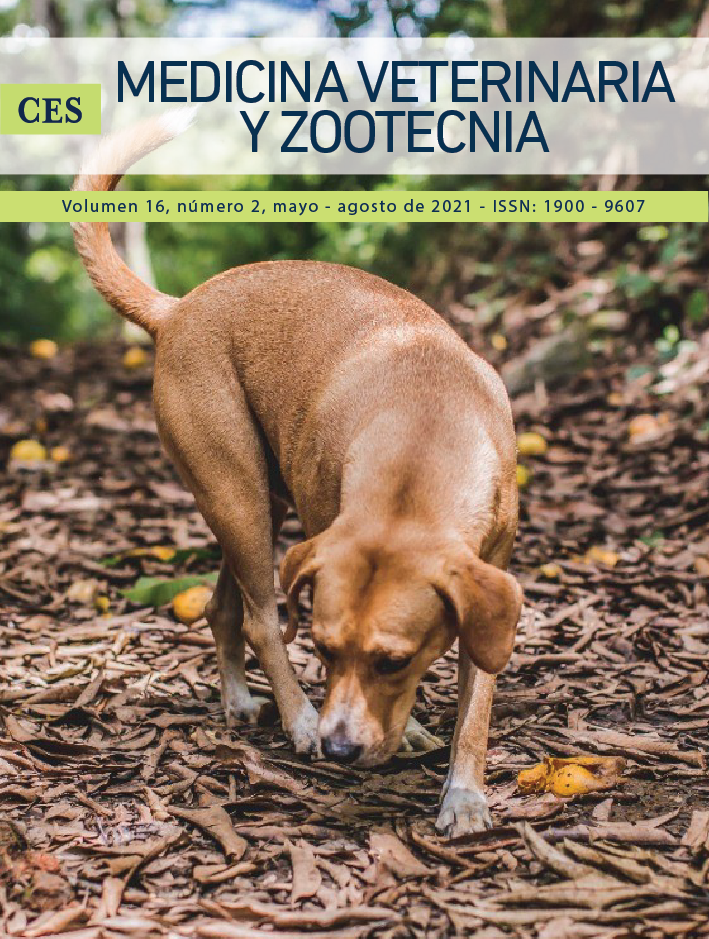Ictiosis canina, más allá de una simple descamación: reporte de caso en un Boston terrier
DOI:
https://doi.org/10.21615/cesmvz.6221Palabras clave:
Boston terrier, cornificación, hiperqueratosis, ictiosis caninaResumen
La ictiosis canina es un trastorno queratoseborreico primario de carácter hereditario, el cual se ha reportado en Golden retriever, Bull dog americano, Jack Russell terrier, Cavalier King Charles spaniel y Gran danés. En el presente reporte se describe un caso clínico en un Boston terrier que desde cachorro ha presentado diferentes lesiones cutáneas, tiene años de evolución y varios tratamientos previos sin éxito. El diagnóstico se realizó mediante el descarte de otras dermatopatías y un estudio histopatológico. Se instauró un tratamiento multimodal de por vida para reestablecer la barrera cutánea y manejar el desorden de la cornificación.
Descargas
Referencias bibliográficas
Tamamoto-Mochizuki C, Banovic F, Bizikova P, Laprais A, Linder KE, Olivry T. Autosomal recessive congenital ichthyosis due to PNPLA1 mutation in a golden retriever-poodle cross-bred dog and the effect of topical therapy. Vet Dermatol. 2016; 27(4): 306-e75.
Roethig A et al. Is “milk crust” a transient form of golden retriever ichthyosis? Vet Dermatol. 2015; 26: 265-e57.
Mauldin EA. Canine ichthyosis and related disorders of cornification. Vet Clin Small Anim. 2013; 43: 89-97.
Alhaidari Z, Ortonne JP, Pisani A. Congenital ichthyosis in two cavalier king Charles spaniel littermates. Vet Dermatol. 1994; 5 (3): 117-121.
Hoffmann A et al. Congenital ichthyosis in 14 great dane puppies with a new presentation. Vet Pathol. 2016; 53 (3): 614-620.
Puigdemont A et al. Topical polyhydroxy acid treatment for autosomal recessive congenital ichthyosis in the golden retriever: a prospective pilot study. Vet Dermatol. 2018; 29 (4): 323-e113.
Medleau L, Hnilica K. Keratinization and seborrheic disorders. En: Saunders, editor. Small animal dermatology, a color atlas and therapeutic guide. 2da edición. Missouri: Elsevier; 2006. p. 295-326.
Grall A, Guaguére E, Planchais S et al. PNPLA1 mutations cause autosomal recessive congenital ichthyosis in golden retriever dogs and humans. Nat Genet. 2012; 44: 140-147.
Guaguere E, Bensignor E, Kury S et al. Clinical, histopathological and genetic data of ichthyosis in the golden retriever: a prospective study. J Small Anim Pract. 2009; 50: 227-235.
Credille KM, Minor JS, Barnhart KF et al. Transglutaminase 1-deficient recessive lamellar ichthyosis associated with a LINE-1 insertion in Jack Russell terrier dogs. Brit J Dermatol. 2009; 161: 265-272.
Metzger J, Wohlke A, Mischke R et al. A novel SLC27A4 splice acceptor site mutation in great danes with ichthyosis. PLoS one. 2015; 10(10): e0141514.
Casal M, Wang P, Mauldin E et al. A defect in NIPAL4 is associated with autosomal recessive congenital ichthyosis in American bulldogs. PLoS one. 2017; 12 (1): e0170708.
Palma E, Tilocca B, Roncada P. Antimicrobial resistance in Veterinary Medicina: an overvier. Int J Mol Sci. 2020; 21 (6): 1914.
Descargas
Publicado
Cómo citar
Número
Sección
Licencia
Derechos de autor 2021 CES Medicina Veterinaria y Zootecnia

Esta obra está bajo una licencia internacional Creative Commons Atribución-NoComercial-CompartirIgual 4.0.



